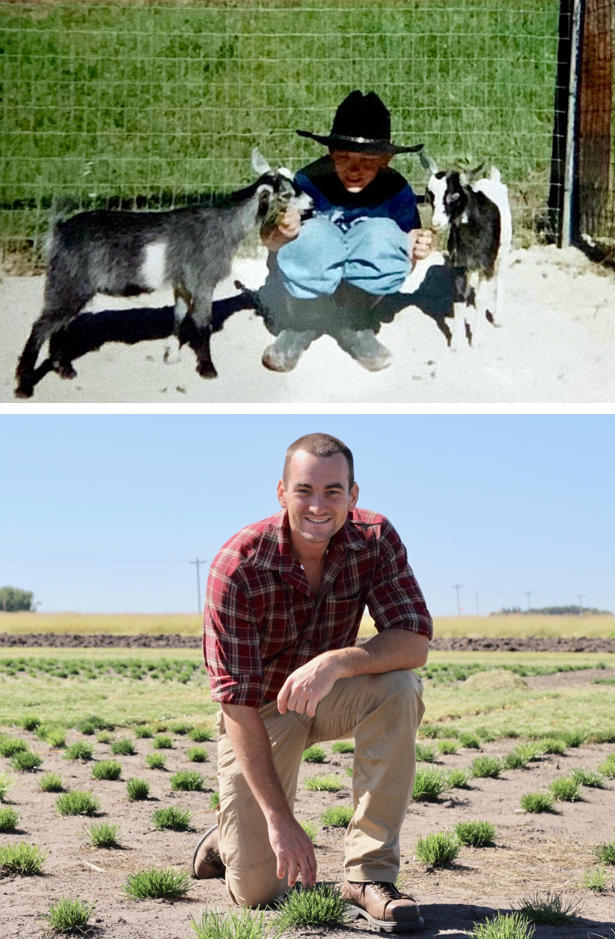As I made my way through a four-year degree at UW-River Falls, I must admit turfgrass science was not on my academic radar; courses such as corn and soybean production, forages, and even interior plantscapes took precedence. In fact, when it came time to take my education beyond a B.Sc., I really had no plans for my future beyond gaining entrance to a school that had a plant breeding program. So, what was it that facilitated my not-so-usual entrance into the ranks of turfgrass scientists? Well, as far as I can recollect, it was a mixture of happenstance, luck, and general curiosity of grass biology. My second on-campus interview for graduate school was an informal and impromptu visit with Dr. Eric Watkins. The project he proposed focused on seed production systems for the turf market and on-farm research in northwest MN, which sparked my interest. During a walk though some Kentucky bluegrass plots he asked the question, “Do you know what apomixis is?” and I rapidly and eagerly tried to articulate the bits of knowledge I had retained from my forage classes at UWRF (Kentucky bluegrass also being a common forage species). My excitement for the project, and a fairly accurate response to an inquiry on the reproductive strategy of a common cool-season grass, helped launch my six-year graduate career.
During my master’s program (2013-2016) at the University of Minnesota I researched methods to increase the longevity of perennial ryegrass seed production systems near Roseau, MN. I also investigated the impact of a widespread species of fungal endophyte on the freezing tolerance of perennial ryegrass. Because of my focus engaged me in agricultural systems of a horticultural amenity species, I had the opportunity to engage in other research on forage grasses and legume cover crops. The dual working environment kept things interesting and I stayed at the UMN to earn my Ph.D. (2016-19). I continued my focus on perennial ryegrass and seed production systems; however I transitioned the bulk of my work to breeding and genetics. I worked to improve our ability to simultaneously select for turfgrass quality and seed yield, examined the potential of fungal endophyte mediated disease resistance, and worked to backcross herbicide tolerance into elite germplasm. During my Ph.D. and my short stint as a postdoc (2019-20), I also gained sufficient computer coding knowledge to develop an open source image analysis system that quantifies some diseases on grass tissue and I also gained fulfillment in teaching tutorials on applied statistical analysis.
Looking to the future I hope to stay involved in the turfgrass industry with a focus on seed production which I would like to couple with forage seed production as well. In May 2020, I am moving to eastern Washington State to start work on a short-term project on lentil pathology and forage seed crops in collaboration with scientists at the USDA-ARS. Luckily, like my entrance into turfgrass science, this move seems to have placed me in an ideal region to continue my research and support the turfgrass seed industry, an industry that has provided me many fulfilling research opportunities, including grower engagement, and cross disciplinary collaborations.
Check out my GitHub page (link below).
https://github.com/GarettHeineck
Need help with your turfgrass data? Request a consult.
Or email - [email protected]
Look for future publications on my Google Scholar (link below).
https://scholar.google.com/citations?user=zjdazxYAAAAJ&hl=en&oi=ao
Research publications by Dr. Garett Heineck
Heineck, G., Y. Qiu, NJ. Ehlke, E. Watkins. 2019. The fungal endophyte Epichloë festucae var. lolii plays a limited role in mediating crown rust severity in perennial ryegrass. Crop Science. Accepted with revision.
Heineck, G., I. McNish, J. Jungers, E. Gilbert, and E. Watkins. 2019. Using R-based image analysis to quantify rusts on perennial ryegrass. The Plant Phenome Journal. 2:180010. doi:10.2135/tppj2018.12.0010.
Heineck, G., S. Bauer, M. Cavanaugh, A. Hollman, B. Horgan, E. Watkins. 2018. Variability in creeping bentgrass (Agrostis stolonifera L.) cultivar germinability as influenced by cold temperatures. Crop, Forage and Turfgrass Management. doi:10.2134/cftm2018.07.0054
Wiering, N. P., C. Flavin, C. C. Sheaffer, G. C. Heineck, W. Sadok, and N. J. Ehlke. 2018. Winter hardiness and freezing tolerance in a hairy vetch collection. Crop Science. 58:1594-1604. doi:10.2135/cropsci2017.12.0748
Heineck, G., Watkins, E., Ehlke, N. J. 2018. The fungal endophyte Epichloe festucae var. lolii does not improve the freezing tolerance of perennial ryegrass. Crop Science. 58:1788-1800. doi:10.2135/cropsci2017.12.0731
Heineck, G., Watkins, E., & Ehlke, N. J. 2017. Exploring alternative management options for multiyear perennial ryegrass seed production in northern Minnesota. Crop Science. 58:426-434.
Hollman, A. B., Heineck, G. C., Frank, K. W., Bauer, S. J., Bryan, J., & Horgan, B. P. 2017. effects of de-Icing products on putting green turf. International Turfgrass Society Research Journal, 13(1), 256-263.
Awards received by Dr. Garett Heineck
Musser Award of Excellence. 2020. The Musser International Turfgrass Foundation.
Chris Stiegler Turfgrass Science Student Travel Award and Fellowship. 2018. CSSA - C05.
William H. Alderman Memorial Graduate Award. 2018. University of Minnesota – Department of Horticultural Science.
Robert P. Widstrand Horticulture Science Award. 2018. University of Minnesota – Department of Horticultural Science.
